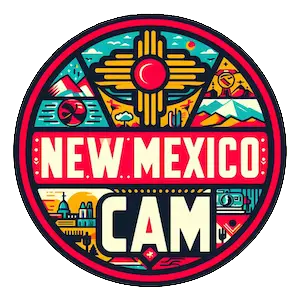Tucumcari, NM Weather Cams
Tucumcari Cam
The Crossroads of Opportunity: A History of Tucumcari, New Mexico
Tucumcari, NM Weather Cams. Nestled in the heart of New Mexico’s high plains, Tucumcari has long been a crossroads of opportunity, a place where travelers, traders, and settlers have passed through and left their mark on the landscape and culture of this unique town. Its rich history dates back to the prehistoric era, when indigenous peoples traversed the region, leaving behind remnants of their existence in the form of ancient rock art and artifacts.
The town’s name itself is a testament to its diverse heritage, derived from the Comanche word “Tukuncarí,” meaning “to lie in wait for something along a river.” This moniker proved prophetic, as Tucumcari’s strategic location along the Conchas River and the ancient trade routes that crisscrossed the area made it an ideal place for travelers to rest and replenish their supplies.
The 19th century saw the arrival of Spanish and Mexican settlers, who established ranches and villages in the region, laying the foundations for what would eventually become the town of Tucumcari. However, it was the arrival of the railroad in the late 1800s that truly transformed the area, bringing with it a influx of new settlers, businesses, and opportunities.
In 1901, the Rock Island Railroad established a depot in Tucumcari, and the town quickly grew into a thriving hub for trade and transportation. Hotels, saloons, and businesses sprouted up to cater to the needs of the railroad workers and travelers passing through. The town’s proximity to the Texas-New Mexico border also made it a popular stop for cattle drivers, who would rest their herds before continuing their journey.
The early 20th century saw Tucumcari’s fortunes rise and fall with the ebb and flow of the railroad industry. During World War II, the town experienced a brief resurgence as a training ground for military pilots, but the postwar decline of the railroad industry took its toll. However, the town’s resilience and determination remained steadfast, and it reinvented itself as a haven for travelers along the legendary Route 66.
From the 1950s through the late 1970s, Tucumcari thrived as a prime stop along the “Mother Road,” offering weary travelers a respite from the long stretches of highway. Iconic motels, diners, and neon signs dotted the town’s landscape, beckoning road-trippers with the promise of a comfortable night’s rest and a hearty meal.
As the interstate highway system began to supplant Route 66, Tucumcari faced yet another economic challenge. But the town’s unwavering spirit and love for its history prevailed. In the late 20th and early 21st centuries, Tucumcari embraced its Route 66 heritage, reinventing itself as a nostalgic destination for travelers seeking to experience the glory days of the open road.
Today, Tucumcari is a vibrant community that celebrates its rich cultural tapestry. The town’s historic downtown district, adorned with neon signs and vintage motels, pays homage to its Route 66 heyday, while also offering a glimpse into its Native American, Spanish, and cowboy roots. Annual events like the Tucumcari Tonite celebration and the Neon Boneyard tour showcase the town’s unique charm and attract visitors from around the world.
Beyond its tourist appeal, Tucumcari remains a vital economic and cultural hub for the surrounding region. Its diverse population, comprising Native Americans, Hispanics, and descendants of early settlers, contributes to a rich tapestry of traditions and customs that are woven into the fabric of the community.
As Tucumcari looks to the future, it remains steadfast in its commitment to preserving its storied past while embracing new opportunities for growth and development. With its resilient spirit and unwavering pride in its heritage, this crossroads of opportunity continues to captivate and inspire all who pass through its doors.
For more information, visit the Tucumcari, New Mexico website.
